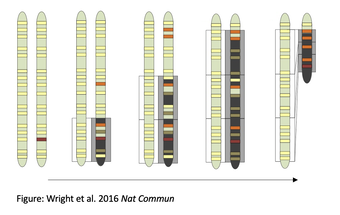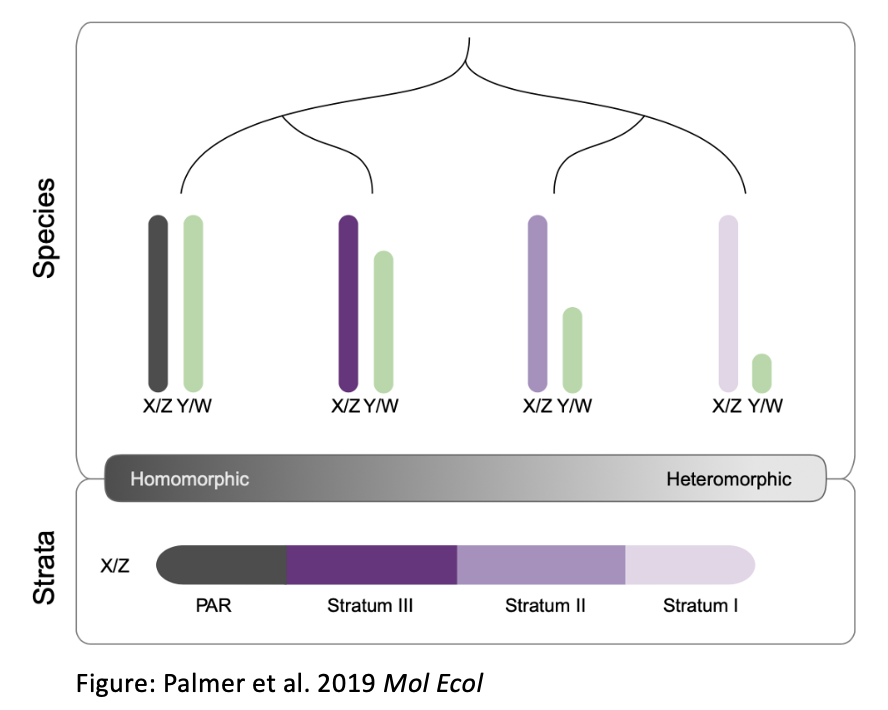|
Two sexes, one genome: but how?
Males and females of many species often look and behave very differently. However, the two sexes share an almost identical set of genes. So, how do these remarkable sex differences arise? Our research is centered on understanding the genomic and evolutionary processes underlying sex differences, and the manifestation and resolution of sexual conflict. |
Genomics of sexual ornamentsWithin species, a single genome can encode multiple distinct phenotypes by varying expression levels of the underlying loci. Similarly, across species, regulatory variation is implicated in major phenotypic differences that underlie adaptive change. Using new single-cell sequencing technologies, we test how sexual selection drives gene expression evolution and the role of regulatory variation in the evolution of exaggerated sexual ornaments
|
Sex chromosome evolution and degenerationLack of recombination on the sex-limited W and Y chromosomes means that loci are locked together in physical linkage and decay through a combination of neutral processes. However, degeneration may be countered by sex-specific selection, where genes maintained on the W and Y should harbor loci for female and male function respectively. Our research how and why sex chromosomes diverge and degenerate.
|
Origins and turnover of sex chromosomesWhy do new sex chromosomes evolve in the first place? What drives turnover between sex determination systems? We study the evolutionary processes catalysing the formation of sex chromosomes. Specifically, why do sex chromosomes stop recombining and how is recombination halted? Species with nascent sex chromosomes offer exciting opportunities to answer these questions.
|
|
To hear about recent work in the group watch my Genetics Society Balfour Prize 2021 lecture
|
For my postdoctoral work watch my Jasper-Loftus Hills Young Investigator prize talk at Evolution 2017, Portland.
|
|
|
|
|


